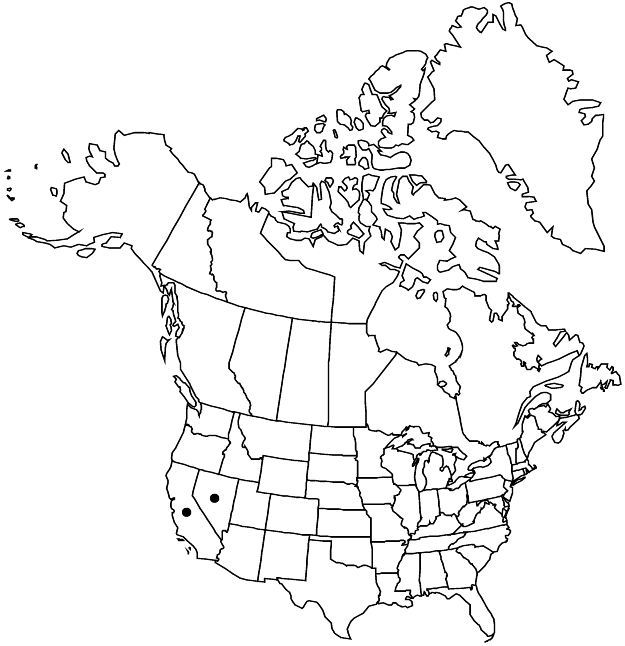Eriogonum rupinum
Aliso 7: 226. 1970.
Herbs, erect, 3–5 × 0.5–1 dm, tomentose, brownish. Stems slightly spreading to erect, without persistent leaf-bases, up to 1/5 height of plant; caudex stems absent; aerial flowering-stems erect, slender, solid, not fistulose, 1.5–2.5 dm, tomentose. Leaves basal, 1 per node; petiole (2–) 3–7 cm, tomentose; blade elliptic to oblong, (2–) 2.5–4.5 (–5) × 1.5–3.5 (–4) cm, thinly tomentose abaxially, less so to floccose and greenish adaxially, margins plane. Inflorescences cymose, with involucres racemosely disposed at tips, 15–25 × 5–15 cm; branches dichotomous, tomentose; bracts 3, scalelike, triangular, 2–4 mm. Peduncles absent. Involucres 1 per node, turbinate-campanulate, 3–4 × 3–4 mm, tomentose; teeth 5, erect, 0.1–0.3 mm. Flowers 2.5–4.5 (–5) mm; perianth creamy white or cream, glabrous; tepals connate proximal 1/4, monomorphic, broadly oblanceolate; stamens exserted, 2.5–5 mm; filaments pilose proximally. Achenes light-brown, 2–4 mm, glabrous. 2n = 40.
Phenology: Flowering Jul–Sep.
Habitat: Gravelly flats, slopes, and ridges, saltbush and sagebrush communities, pinyon-juniper, oak, and montane conifer woodlands
Elevation: 1700-3100(-3500) m
Discussion
Eriogonum rupinum is the most widespread of the three robust species related to E. racemosum. The Wyman Creek wild buckwheat occurs from the White and Inyo mountains of Mono and Inyo counties, California, eastward in scattered mountain ranges across the central Great Basin of Nevada (Esmeralda, Lander, Lincoln, Mineral, and Nye counties). The bulk of the populations are concentrated in Nye County, Nevada. The Lincoln County location, based on an 1898 collection (Purpus 6263, DS, SD), requires confirmation.
Selected References
None.
Lower Taxa
"/2" is not declared as a valid unit of measurement for this property."dm" is not declared as a valid unit of measurement for this property."dm" is not declared as a valid unit of measurement for this property.
